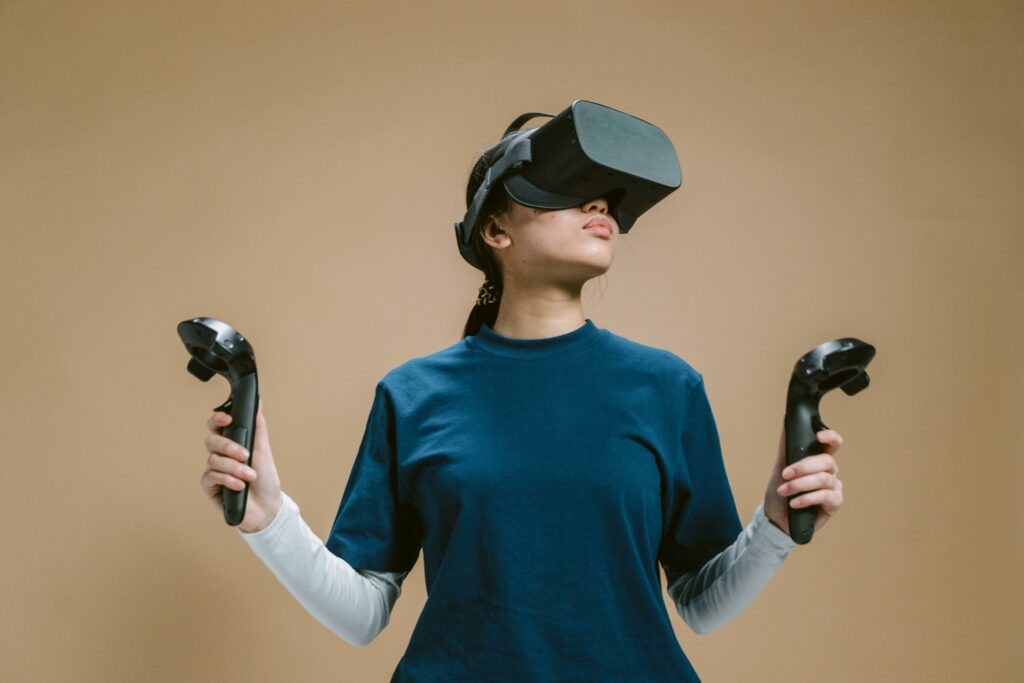Key Takeaways
- Decentralization in Gaming: Web3 game development emphasizes decentralization, enabling players to have true ownership of in-game assets through blockchain technology.
- Enhanced Player Engagement: Key concepts such as NFTs and cryptocurrencies allow developers to create immersive gaming experiences and alternative monetization strategies, including play-to-earn models.
- Core Technologies: Knowledge of blockchain, smart contracts, and decentralized applications (dApps) is essential for leveraging the true potential of Web3 in gaming.
- User-Centric Design: Successful Web3 games focus on user-friendly interfaces and community engagement, allowing players to actively participate in game governance and decision-making.
- Challenges & Solutions: Developers face technical barriers, regulatory issues, and market adoption challenges, which necessitate innovative approaches and effective marketing strategies to enhance acceptance.
- Future Trends: The Web3 gaming landscape is expected to grow with advancements in blockchain technology, AI, and immersive experiences, paving the way for a more engaging and player-first gaming environment.
The gaming industry is undergoing a seismic shift with the rise of Web3 technology, transforming how players interact with games and each other. This new era emphasizes decentralization, giving players true ownership of in-game assets through blockchain technology. As developers embrace these innovations, they unlock fresh opportunities for creativity and engagement.
Web3 game development is not just about creating games; it’s about building ecosystems where players can thrive. With the integration of cryptocurrencies and non-fungible tokens (NFTs), developers can design immersive experiences that reward players in ways traditional gaming never could. As this trend continues to grow, understanding the principles of Web3 game development becomes essential for anyone looking to stay ahead in the evolving landscape of digital entertainment.
Web3 Game Development
Web3 game development represents a significant evolution in the gaming landscape, merging blockchain technology with interactive entertainment. This shift enables players to experience enhanced ownership and engagement through decentralized systems.
Definition And Key Concepts
Web3 game development refers to the creation of games that utilize decentralized technologies, particularly blockchain, to offer unique player experiences. Key concepts include:
- Blockchain Technology: This system records transactions securely and transparently, allowing players to own in-game assets.
- NFTs (Non-Fungible Tokens): These digital assets represent unique in-game items, providing verifiable ownership and enabling trades among players.
- Decentralization: This principle distributes control among users, empowering players and communities rather than central authorities.
- Cryptocurrencies: These digital currencies facilitate transactions within games, enabling seamless exchanges for in-game assets and rewards.
- True Asset Ownership: Players possess real ownership of their digital assets, enhancing the gaming experience.
- New Revenue Models: Developers can explore alternative monetization strategies, including play-to-earn models, that engage players financially.
- Increased Community Involvement: Players participate in game governance, influencing development decisions and fostering a sense of belonging.
- Innovative Gameplay: Game creators utilize decentralized technologies to develop novel gaming experiences that were previously unfeasible.
Core Technologies In Web3 Game Development
Web3 game development relies on several core technologies that facilitate innovative experiences and empower players. Understanding these technologies is essential for developers and enthusiasts alike.
Blockchain Fundamentals
Blockchain serves as the foundational technology for Web3 games, enabling secure, transparent transactions. It creates immutable records of player interactions and asset ownership. Developers utilize blockchain’s decentralized nature to break traditional gaming paradigms. They provide players with verifiable proof of ownership for in-game items through tokenization. Multiple blockchain platforms, including Ethereum and Solana, support game development with smart contracts, enhancing scalability and speed.
Smart Contracts
Smart contracts automate and enforce agreements between parties within the game ecosystem. They execute predefined conditions without intermediaries, ensuring trust and efficiency. Developers use smart contracts for various functions, such as managing in-game currencies, handling transactions, and creating unique items. Smart contracts also facilitate play-to-earn models by disbursing rewards directly to players based on their achievements. Through these automated processes, developers minimize risks associated with traditional payment methods.
Decentralized Applications (dApps)
Decentralized applications (dApps) represent the interface through which players interact with Web3 games. dApps operate on the blockchain, providing a transparent environment free from centralized control. Developers build dApps to ensure players maintain full control over their in-game assets and experiences. These applications integrate with various wallets and platforms, allowing seamless cryptocurrency transactions and interactions. dApps enhance the community-driven aspects of gaming, enabling players to engage in governance and contribute to game evolution.
Game Design Principles In Web3
Game design in the Web3 landscape centers on player empowerment, interaction, and community involvement. Such principles guide developers in creating engaging and sustainable gaming experiences.
User-Centric Design
User-centric design focuses on enhancing player experiences through intuitive interfaces and personalized gameplay. Players enjoy ownership of in-game assets, leading to more meaningful interactions. Incorporating feedback mechanisms allows developers to adapt designs based on player input. Designing for accessibility ensures that diverse audiences can engage with the game, contributing to a larger player base. Implementing features like user-friendly wallets and clear onboarding processes simplifies blockchain interactions for players.
Community Engagement And Governance
Community engagement plays a vital role in Web3 game development. Decentralized governance models empower players to influence game development and policy decisions. Seeking player input on updates or game mechanics fosters a sense of ownership and belonging within the community. Integrating social features, such as forums and in-game discussions, encourages collaboration and interaction among players. Rewarding community contributions through tokens or NFTs strengthens loyalty and incentivizes active participation.
Challenges Faced In Web3 Game Development
Web3 game development presents various challenges that developers must navigate. These challenges stem from technical complexities, regulatory landscapes, and market dynamics.
Technical Barriers
Technical barriers significantly impact Web3 game development. Developers encounter hurdles when integrating blockchain technology with traditional gaming frameworks. Scalability issues often arise, as many blockchains struggle to handle high transaction volumes during peak usage, leading to slow transaction speeds and high fees. Additionally, the learning curve associated with blockchain development can hinder new developers, limiting the pool of talent available. Security concerns also pose challenges; vulnerabilities in smart contracts can lead to exploitations, jeopardizing player assets and developer reputations. Furthermore, optimizing user experiences in decentralized applications (dApps) requires careful consideration, as cumbersome interfaces may deter players from fully engaging with the game.
Regulatory Issues
Regulatory issues present another significant challenge in Web3 game development. Various jurisdictions lack clear guidelines for blockchain gaming, creating uncertainty for developers. Compliance with existing laws on cryptocurrencies and digital assets often complicates the game launch process, as developers must navigate the complex landscape of regulations. Anti-money laundering (AML) and know your customer (KYC) policies impose additional barriers, further complicating player onboarding. These regulatory uncertainties can lead to cautious approaches from developers, limiting innovation and slowing down the adoption of new gaming models in the market.
Market Adoption
Market adoption poses a challenge for Web3 games, impacting the overall success of projects. Despite the growing interest in blockchain technology and decentralized gaming, broad acceptance among traditional gamers remains low. Many players still prioritize familiar user experiences found in conventional games, raising skepticism about the perceived value of ownership associated with blockchain assets. Additionally, the volatile nature of cryptocurrency markets can deter players and investors alike, as fluctuations in asset value may undermine the perceived stability of in-game economies. Effective marketing strategies and education about the benefits of Web3 gaming are crucial to fostering acceptance and driving player engagement. By addressing these market hurdles, developers can enhance the likelihood of successful product launches.
Future Trends In Web3 Game Development
Web3 game development continues to evolve, shaped by emerging technologies and predictions for industry growth. These factors significantly influence the gaming landscape, enhancing player experiences and broadening opportunities for developers.
Emerging Technologies
Emerging technologies are rapidly reshaping the Web3 gaming ecosystem. Significant advancements include:
- Blockchain Enhancements: Layer 2 solutions improve scalability and transaction speed, reducing costs and enhancing user experience.
- Artificial Intelligence (AI): AI facilitates personalized gameplay, creating dynamic environments that adapt to player behavior and preferences.
- Augmented Reality (AR) and Virtual Reality (VR): These immersive technologies blend physical and digital experiences, enabling unique interactions and community engagement within games.
- Interoperability: Cross-platform capabilities allow assets to move seamlessly between different games, fostering a cohesive player experience and expanding the value of in-game items.
These technologies collectively drive innovation, leading to richer and more engaging gaming experiences.
Predictions For Industry Growth
Predictions for growth within the Web3 gaming industry indicate a transformative trajectory. Key factors include:
- Market Expansion: The global gaming market is projected to reach $200 billion by 2023, with Web3 gaming capturing a significant share as players seek more ownership and control over their assets.
- Increased Investment: Venture capital investments in blockchain gaming are expected to exceed $4 billion annually as developers and investors recognize the potential of play-to-earn models.
- Mainstream Adoption: Major gaming companies are likely to experiment with Web3 elements, integrating cryptocurrencies and NFTs into established franchises, facilitating broader acceptance among traditional gamers.
- Community Governance: Decentralized governance models will gain traction, empowering players to shape game development and influence monetization strategies, ultimately enhancing player loyalty.
These predictions highlight a promising path for Web3 game development, signaling substantial opportunities for engagement and innovation.
NFTs and Decentralized Governance
The evolution of Web3 game development is reshaping the gaming industry in unprecedented ways. With player empowerment and true ownership at its core, this new landscape offers exciting possibilities for both developers and gamers. As blockchain technology continues to mature, the integration of innovative features like NFTs and decentralized governance will further enhance player experiences.
Challenges remain but the potential for growth and engagement is immense. As the gaming market expands and more players embrace these changes, the future of Web3 gaming looks bright. Those ready to adapt and explore this transformative era will find themselves at the forefront of a revolution that redefines how games are created and experienced.

